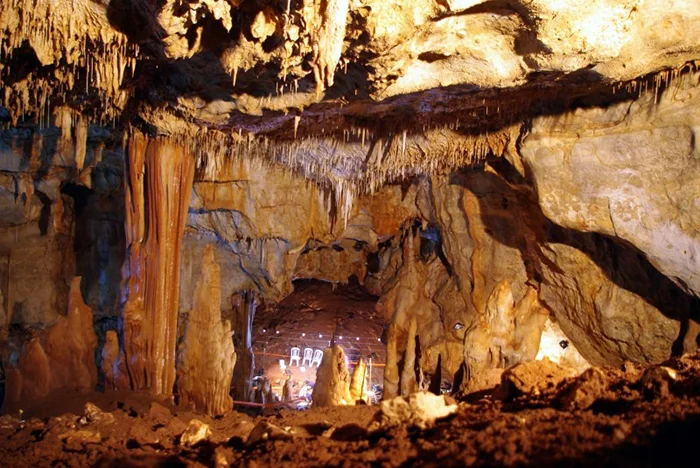Eye | Mami Wata Resurgence As Global Goddess | 55,000 Years-Old Female Skull Provides Critical Link In Human Evolution & Migration Out of Africa
/
Carmelita Mendes Is Beauty Goddess By Mari Queiroz For Amuse Magazine AOC GlamTribale
A Female Skull Closes Migration Link Out of Africa and Into The Levant
 Female Skull In Israel’s Manot Cave Links Humans & Neanderthals 55,000 Years Ago AOC GlamTribale
Female Skull In Israel’s Manot Cave Links Humans & Neanderthals 55,000 Years Ago AOC GlamTribale
In a series of coincidences that are peppered throughout my life, scientists have threaded another needle in the highly-probable story that human life originated in the region of Lake Turkana bordering Kenya and Ethiopia before migrating into a region known today as The Levant.
In a very real sense, today’s religious wars are going on in the very region that is the cradle of human civilization. My own relationship with The Levant area is most focused on studying the evolution of the goddesses and the rise of monotheism.
Kenya, Lake Turkana and the Omo Valley people of Ethiopia are a much stronger connection — one revealed through my inexplicable connections with the young photographer Dan Eldon. Here is a sampling of our journey.
Mami Wata Moves Into Anne of Carversville
 Aphrodite Joins Mami Wata For A Swim in Human Consciousness AOC Sensual Rebel Nov. 2009
Aphrodite Joins Mami Wata For A Swim in Human Consciousness AOC Sensual Rebel Nov. 2009
Men have always been ambivalent about mermaids, the mythological aquatic creature with a female human head and torso but the tail of a fish. In many ancient cultures, mermaids were regarded as semi-divine aspects of the Goddess.
Carl Jung’s theory of the feminine unconscious describes this oceanic-subterranean womb of creation as an unfathomable place of ancient wisdom but also fear.
The first known mermaid stories appeared in Assyria, ca. 1000 BC. The goddess Atargatis, mother of Assyrian queen Semiramis, loved a mortal shepherd and unintentionally killed him.
Distraught and ashamed, Atargatis jumped into a lake to take the form of a fish, but the waters would not conceal her divine beauty. Thereafter, she took the form of a mermaid—human above the waist, fish below—though the earliest representations of Atargatis showed her as a fish with a human head and legs, similar to the Babylonian Ea. The Greeks recognized Atargatis under the name Derketo.
Prior to 546 BC, the Milesian philosopher Anaximander proposed that mankind had sprung from an aquatic species of animal. The scientist and highly-regarded critical thinker thought that humans, with their extended infancy, could not have survived otherwise.
Mami Wata Resurgence In South Africa
 Steve Marais Celebrates African & Global Goddess Mami Wata As Mermaid In Gaschette Magazine AOC Salon
Steve Marais Celebrates African & Global Goddess Mami Wata As Mermaid In Gaschette Magazine AOC Salon
More reading:
Female Skull In Israel's Manot Cave Links Humans & Neanderthals 55,000 Years Ago
/Female Skull In Israel's Manot Cave Links Humans & Neanderthals 55,000 Years Ago AOC Muse
Israeli researchers published a critical article this week, arguing that a 55,000 years-old, female skull found in the Manot Cave of Israel’s Western Galilee is a crucial link in understanding the evolution of the human species. Scientists believe that the skull offers definitive proof that anatomically modern humans coexisted with Neanderthals in the same geographical area.
It’s widely accepted science that human origins date back about 200,000 years to Africa. However, there has not been agreement about which migration model of early Homo sapiens led to the population of our planet, accompanied by the extinction of Neanderthals.
The morphology of the skull indicates that it is that of a modern human of African origin, bearing characteristics of early European Upper Palaeolithic populations. This suggests that the Levantine populations were ancestral to earlier European populations,” said Prof. (Israel) Hershkovitz (of Tel Aviv University). “This study also provides important clues regarding the likely inbreeding between anatomically modern humans and Neanderthals.”
The Manot Cave, where the skull was unearthed, was discovered accidentally in 2008 when a bulldozer struck the cave roof, revealing a time capsule tens of thousands of years old. “This is a goldmine,” said Prof. Hershkovitz. “Most other caves are ‘disturbed caves,’ but this is untouched, frozen in time — truly an amazing find. Among other artefacts found there, the skull, which we dated to 55,000 years ago using uranium thorium methods, was astonishing. It provides insight into the beginnings of the dispersal of modern humans all over the world.”







